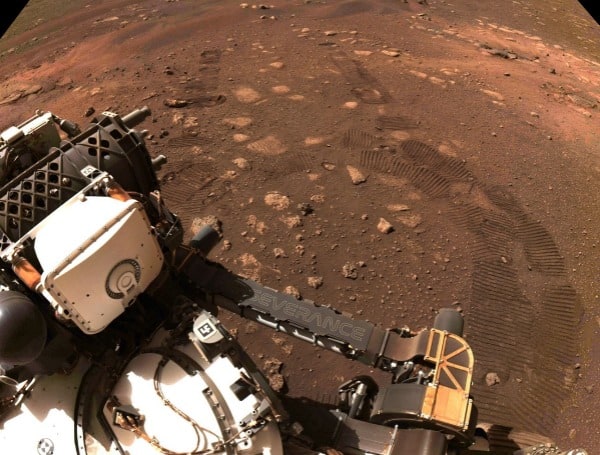After its amazing landing on February 18th, NASA’s Perseverance rover on Mars may seem like it has been doing nothing since, but it’s been conducting tests and preparing for what it does better than any Mars rover before it: moving. It recently took its first drive, and after rotating its wheels and testing its steering, the rover performed a 21-foot roll-and-turn drive, which took about 33 minutes.
It’s easy to forget that the rover is car-sized and weighs over a ton, based on the photos and imagery when considering what a feat it is to conduct this small driving test. The wheels are also constantly rolling over rocks, thanks to the landing site being an ancient lake bed, so slippage and troublesome terrain are a major factor in the rover’s speed.
The rover tops out at .01 miles per hour (.016 kilometers), which isn’t terribly fast, but the advances in autonomous navigation will ensure that Perseverance can traverse further than any of its predecessors. It uses its navigation systems to take pictures of what’s in front of it and then processes them on the fly, instead of taking additional time to process and assess terrain before moving.
Anais Zarifian, the Mars 2020 Perseverance rover mobility test bed engineer at NASA’s JPL in Southern California was impressed with the test, “This was our first chance to ‘kick the tires’ and take Perseverance out for a spin. The rover’s six-wheel drive responded superbly. We are now confident our drive system is good to go, capable of taking us wherever the science leads us over the next two years.”
More than just roving, the amazingly complex Perseverance also got a software update, which replaced the landing program that helped the rover perform its necessary procedures with one that will activate its investigative tools and features. Both the subsurface imager (RIMFAX) and the Mars Oxygen In-Situ Resource Utilization Experiment (MOXIE) were tested by mission control, and they also deployed the wind-sensing Mars Environmental Dynamics Analyzer (MEDA), which extends from the rover’s mast.
Finally, the rover’s robotic arm got to stretch its joints for the first time on the Martian surface, flexing each of its five joints in a matter of two hours. “That’s the main tool the science team will use to do a close-up examination of the geologic features of Jezero Crater, and then we’ll drill and sample the ones they find the most interesting. When we got confirmation of the robotic arm flexing its muscles, including images of it working beautifully after its long trip to Mars – well, it made my day,” said Robert Hogg, the Mars 2020 Perseverance rover deputy mission manager.
These tests are just the beginning, however, as more detailed testing of its science instruments, longer drives, and the deployment of the Ingenuity and its first flight test are also part of the commissioning process. With its incredibly detailed cameras, the rover has captured the monumental steps at each checkpoint and will continue to provide visual evidence of the exploration of Mars like never before.
Subscribe to our newsletter!

